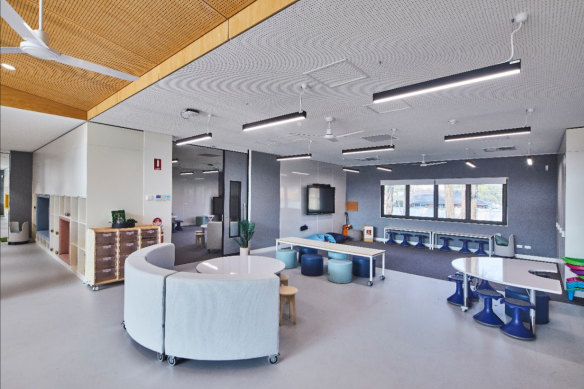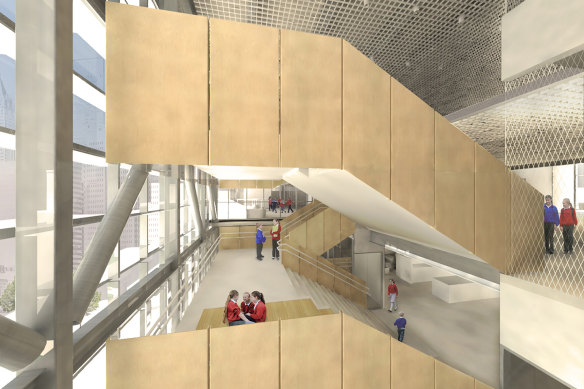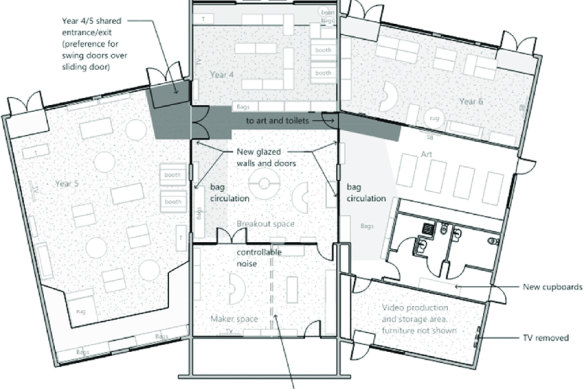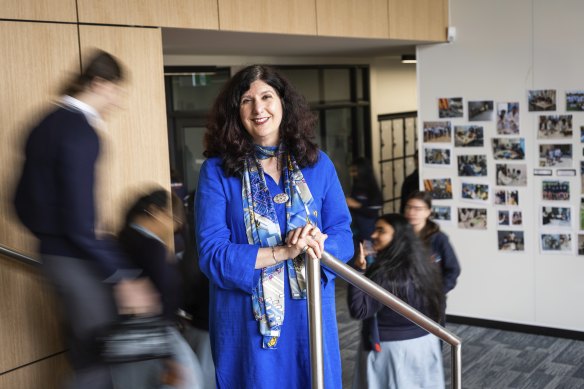Bringing the noise: Open-plan classrooms drive debate on distraction
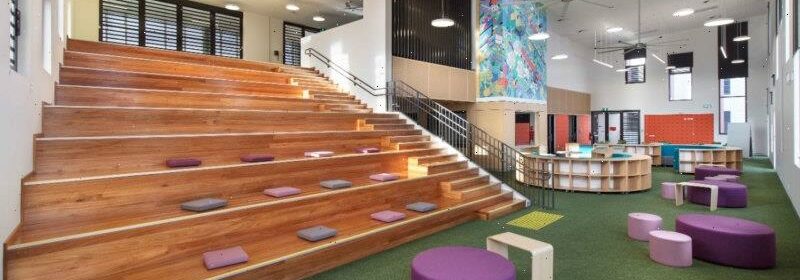
The trend of building open-plan and flexible classrooms in new Victorian schools is creating noisy, distracting learning spaces that impede effective teaching, the Grattan Institute has warned.
The independent think tank has urged the Andrews government to stop the construction of open-plan rooms in schools and return to more traditional classroom design, until it has more evidence the voguish spaces benefit students.
Most new and upgraded schools have some form of flexible learning spaces, such as two classrooms that can be opened into one for group learning.
It has also asked the government to consider funding schools to remediate open-plan classrooms, so teachers can reduce noisy distractions.
“The government has committed to spending an additional $1.8 billion on school infrastructure over the next four years, but the danger is that many classrooms may be built in ways that undermine high-impact teaching,” Grattan Institute senior associate Anika Stobart said.
“Until there is robust evidence to the contrary, the government should stop building noisy open-plan classrooms that will drown out the hard work of effective teachers for decades to come.”
The Victorian School Building Authority commonly builds and upgrades schools that feature “flexible learning spaces” based on the concept of “learning communities”.
An artist’s render of South Melbourne Primary School, which opened in 2018.
“Learning communities are larger buildings made up of multi-purpose spaces. Educators can use them in different ways to educate students. This might mean using doors, movable walls or furniture to create barriers,” the authority says.
The Grattan Institute regularly visits new schools in its research, and encounters noisy spaces with multiple classes happening at once, which Stobart said made it difficult to focus or sometimes even hear the teacher properly.
She said classroom design should follow evidence about effective learning, not architectural fads.
“There is limited evidence about the impact of open-plan classrooms on student learning,” she said. “But what we do know is that too much noise is bad for student learning.”
Dr Lisa O’Keeffe, a senior lecturer in mathematics at UniSA, contributed to a before-and-after analysis of one primary school that was built with open-plan learning spaces, but later installed glazed partitions and doors to overcome noise and distraction.
Teachers at the school went out of their way to avoid using the open-plan classroom if they could, O’Keeffe said.
“Nobody in the school wanted to be in that room,” she said.
Teachers told the researchers they struggled with constant background noise and were distracted by movements from other classes simultaneously using the space. They also worried about how the noise and distraction affected students with learning challenges.
An image of the repurposed open-plan design, with glass partitions and doors installed to create separate learning spaces.
Acoustic data found that decibel levels in the open-plan space almost always stayed within acceptable industry standards, yet teachers still reported that potential for noise and distraction from another class limited their freedom to use the space. This forced them to co-ordinate noisy or quiet class-time activities with other teachers.
The school soon installed glass partitions and doors to create physically separated learning areas. Changes in ambient noise levels were “negligible”, but teachers and students quickly changed how they used the spaces.
“Putting in the doors and the glass actually created way more flexibility in terms of how the teachers were using the space,” O’Keeffe said.
“There was still team teaching and collaborating, but they were doing it when they wanted to and when it made sense from a learning perspective, not because they had to.”
Associate Professor Wes Imms, of the University of Melbourne’s Graduate School of Education, said despite the perceptions of a small percentage of teachers, there was no conclusive evidence that open-plan classrooms were noisier than traditional learning spaces.
Imms was part of a four-year federally funded research project analysing innovative learning environments, which also studied noise levels in open plan and flexible learning spaces. The research found there was no increase in noise, but that teachers needed more support to make the most of the spaces.
“It is not an accurate call to say the more open spaces are noisier than the traditional classroom,” Imms said. “Let’s not address a noise issue that doesn’t exist.”
Imms cautioned against setting up a polarised argument of open-plan versus traditional learning spaces.
“A traditional classroom is well understood, but open-plan ranges from everything from classrooms with breakout spaces to a totally open room with two to three classes in it.”
Students at Edgars Creek Secondary College are comfortable in flexible learning spaces, principal Jo Camozzato says.Credit:Paul Jeffers
The group’s research found most learning spaces in Australian schools are not one or the other, but hybrid spaces.
Edgars Creek Secondary College principal Jo Camozzato said flexible learning spaces had benefits for students, but that teachers needed to be supported and given time to gain confidence and make the most of them.
“We want to encourage certain skills, we want young people to be able to collaborate more in spaces that allow for that, we don’t just have to sit in rows any more,” she said.
Camozzato said most students who attended the school, in a growth suburb in Melbourne’s north, also went to newer primary schools with flexible spaces, where they were comfortable.
“They are accustomed to learning in spaces that have a different set-up to the traditional four-walled classroom. But there’s no doubt you have to support teachers to have time to get used to the space.”
An Education Department spokesperson said the Victorian School Building Authority works with infrastructure and education experts, teachers and architects to improve the design of school buildings.
New schools opening in 2023 included traditional classrooms and flexible learning spaces and made use of cutting-edge materials and design to deliver improved acoustics, the spokesperson said.
The Morning Edition newsletter is our guide to the day’s most important and interesting stories, analysis and insights. Sign up here.
Most Viewed in National
From our partners
Source: Read Full Article
